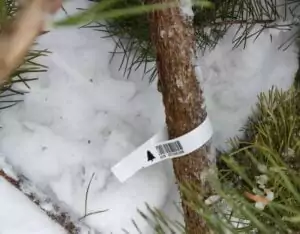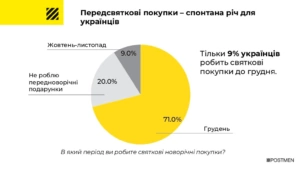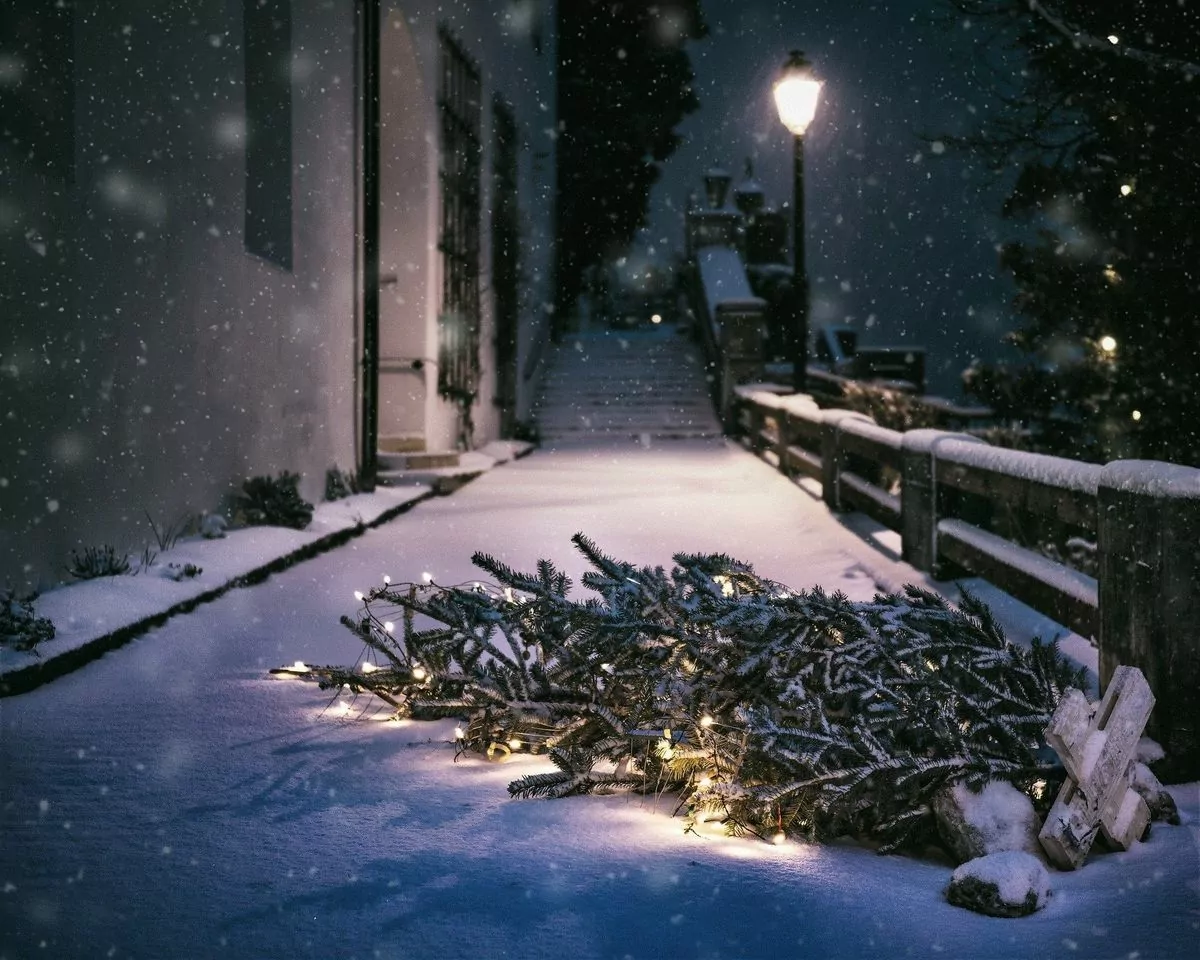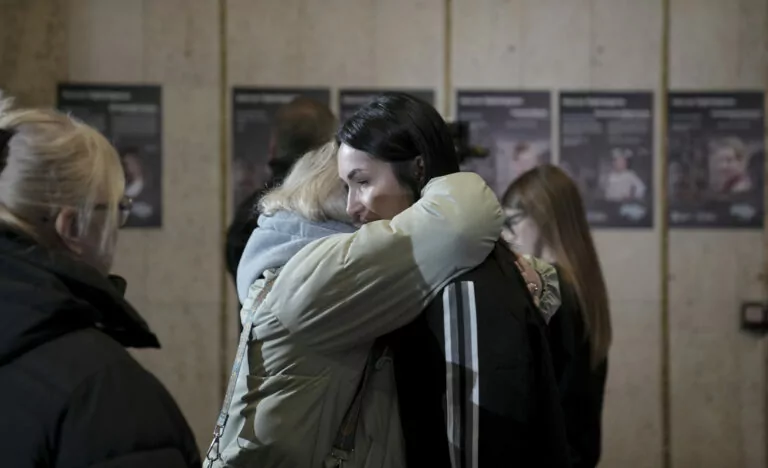St. Nicholas Day, New Year, Christmas, Old New Year – this period in the global world is a period of rest with lovely ones and a busy season for various markets and industries. From Coca-Cola factories to grocery retailers, all field players today use the New Year’s miracle vibe to satisfy the demand for the holiday and sell their products.
We at Gwara Media wondered: what are Ukrainians’ good and harmful economic and environmental habits during the holidays? How does the Christmas decoration market work? What kind of “exhaust” does it leave every year in the environment and the economy? After all, how to create an atmosphere for yourself? While not rejecting, the weekend ranks with a pile of unnecessary junk and garbage.
We analyze these problems using several essential initiatives in Ukraine and abroad.
Examples of environmental initiatives
Garbage leftover from the holidays is a big issue for almost all countries, especially cities with over 1 million people. Suppose in Ukraine, mainly many felled trees in landfills, polyethene, and food waste, then in China. In that case, Britain, the US, and Europe, disposable gift wraps and wrappers are also a significant concern. “Ukrainian Club of Agrarian Business” once estimated that we throw away food for more than 470 million UAH for the holidays. The North London Waste Authority (NLWA) handles garbage collection and recycling. They reveal that only in Britain, there are about 365,000 kilometres of such paper in ordinary landfills after Christmas. That is why there are a lot of initiatives and services – both government and business, which help the buyer give the goods for recycling or manufacture and sell eco-friendly goods. Top-rated companies like Re-wrapped offer wrapping paper and paper products from 100% recycled and environmentally friendly material. National Recycle Now campaigns also conduct educational work and explain which products will be accepted and which will not be accepted for processing by local governments and why.
An exciting solution to this problem is brands and online stores that today sell so-called furoshiki wraps throughout America and Europe. Traditional clothing and unique fabric have long been used to wrap and transport items in Japan. In 2020 and 2021, this type of gift wrap made of material became so popular that The Guardian and the big glossy actively wrote about it. Such a substitute for gift paper you can buy on Etsy and in Ukrainian Lush.

A separate topic of conversation is organic waste, including thousands of Christmas trees and trees sent to landfills every year. Different countries have different legal norms and services that control this process work differently. For example, in Germany, a Christmas tree is fined from 25 to 100 euros in other regions for improper disposal, i.e., taken to the landfill. It is in stark contrast to the situation in Ukraine. Our certified sellers have contracts with public utilities that remove the garbage. There are points where everyone can hand in their Christmas tree. However, only a tiny percentage of people do it.
According to the chairman of the all-ukrainian ecological league, in 2020 in kyiv, 14 thousand trees. at the same time, was sold more than 500 thousand.
In Germany, the recycling of Christmas trees is an organized process. Municipalities and recycling companies have certain days (announced in advance) when city dwellers have to take out their decorated Christmas tree and leave it near the tank. Special transport will pick her up, and it will be such a free service. Also, in Germany, some toys are banned (for example, uncertified low-quality garlands), and there is a ban on fireworks on the street.
Companies that deal with eco-friendly Christmas goods and decorations, including the sale of natural Christmas trees with minimal carbon footprint, are also often involved in charity. A good example is the Scottish Christmas tree from Caring Christmas Tree, part of the charity Bethany Christian Trust. All the money earned from such trees goes to help the homeless and vulnerable groups in Scotland.
What about Ukraine?
According to the human rights organization Ecology, Human Rights and the Government Courier, about 500-800 thousand Christmas trees are made and sold in Ukraine every year. However, this is only a legal sale – about 50% of the market remains in the shadows. From year to year before the holidays, hundreds of natural calls start operating in the cities, selling illegally felled trees. Those trees that do not have time to sell at these points are often left in the place of chaotic trade, at best – taken to the landfill. The problem is that a rotting tree in a city or dump does not become part of a natural ecosystem. It could be animal feed, fertiliser, and so on. It emits harmful methane, which pollutes the air. Such “natural waste” leads to really unpleasant consequences on a large scale.
The best choice in this regard is to look for a Christmas tree in certified outlets. Today, all forestries must label each and sign a contract with waste disposal services (in Kharkiv, for example, it’s KP “Complex for the removal of household waste”). Do not be lazy and find a certified seller instead of the best under the house – it is not only to harm poaching but also to take care of the environment.

Addresses of such points are published annually on the websites of city councils, and complete lists usually duplicate city media and information resources. In the last few years, the help resource open.ukrforest.com has been operating in Ukraine, which contains data on each tree grown and legally felled, and the yalynka.info application called “Forest in a smartphone”. With the help of these services, you can check any Christmas tree for legality: all you need to do is enter the number from the tag on the tree in the free field.
In general, natural markets are pretty easy to identify. They are primarily unfenced, have no product labels, do not have information about the business entity. The addresses where you can hand over a Christmas tree for recycling are posted on the same administrations’ websites every year.
On the other hand, even on the websites of law enforcement and environmental organisations. Nowadays, you can find a call not to buy a live Christmas tree but to resist the destruction of nature, using artificial. Such a choice also does not benefit the environment and sustainable development. The materials from which artificial Christmas trees are made and toys, various decorations and garlands for them play a huge role, and the method of delivery – in short, everything that becomes part of the product’s ecological footprint. In Ukraine, many people annually order cheap goods on joom, aliexpress, etc., on the eve of the holidays. Such goods come from China, Korea, including land and air transport, i.e. leave a substantial carbon footprint. You can learn more about it, for example, on the website Sustainability for all. Of course, such holiday things are often low-quality plastic with a pungent odour or other harmful substances.

From this perspective, it would be more helpful to choose goods from countries close to us or goods from local manufacturers. Still, not everyone can afford a garland for 5 thousand UAH instead of 15 dollars. If you do not take orders from online giants, the same goods from China, different population categories are already buying in urban markets. Cheap rain, microplastic toys in the aisles and almost every supermarket chain before Christmas remain the most popular holiday decorations.
An interesting study was conducted in the 20th year by the Postmen agency. They surveyed different age groups from all over Ukraine via a Google survey. Unlike the behaviour of North American or European consumers, Ukrainians tend to postpone the choice of gifts until December at the last minute and make mostly spontaneous and low-budget purchases. Even people do not invest in something precious; they still spend a lot of money on low-quality goods to maintain tradition and buy something. Moreover, both for buyers and sustainable development, it would be much more profitable to use more expensive but durable things for years and replace “symbolic” little things with services and personal impressions.

GENERAL RECOMMENDATIONS
- Do not donate plastic and do not support corruption. It is better to buy decor and gifts for the holidays from sellers who can provide detailed information about the product and quality assurance.
- Ideally, if you use an artificial Christmas tree, its service life should be 20 years. Suppose you do not want to keep an artificial one at home or tinker with natural processing. In that case, you can make a composition from a piece of wood or buy a Christmas tree in a pot. However, the latter will have to be planted in the spring.
- Are our holiday packages with bright packaging and bright wrappers necessarily more festive? Of course, businesses advertise their product through such things. Still, often it’s just a low-budget attempt to give you a sense of celebration.
- Finally, don’t underestimate the value of non-material gifts. According to various studies, only some people in Ukraine give their relatives services, tickets, certificates for courses, etc. At the same time, this approach can lead to clutter and thoughtless consumption.
Translated by Sofia Voytovych in the scope of Gwara Media’s volunteer program



